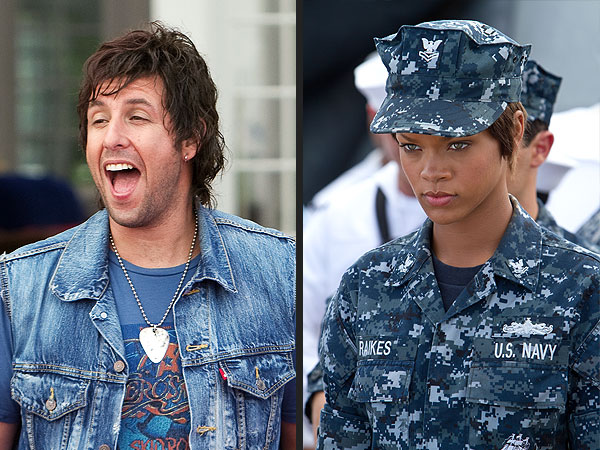VIENNA—Not long ago it looked as if cuts in arts funding would sound the death knell of the Vienna Chamber Opera, known in German as the Kammeroper, an ensemble esteemed for its chamber-scale productions in an intimate, inviting setting. The Austrian federal government’s decision to eliminate entirely its support, which constituted half of the company’s governmental subsidies (the other half coming from the city) effectively put the Kammeroper out of business.
Yet the 2012-13 season has seen the Kammeroper come roaring back with five new productions—including a “Bohème” finishing up performances this weekend— put on by a resident company with an established orchestra in the pit.
How to explain this turnaround? In fact, the old company, which was founded over 50 years ago by Hans Gabor and was subsequently run by Isabella, his widow, is history. The new Kammeroper, formally known as Theater an der Wien in der Kammeroper, is a case of one opera company rushing to fill the void left by the collapse of another.
Few opera companies today are in a financial position to go into expansionary mode. But, with the city willing to continue its support, the Theater an der Wien saw an opportunity, as its director of artistic administration, Sebastian Schwarz, who oversees the Kammeroper, explained by phone. Surprisingly, as he pointed out, the Vienna Staatsoper lacks a young artists program, so the new venture helps meet a need in the city. It also adds a degree of continuity to the Theater an der Wien’s own operations, which include world-class productions of interesting repertory that are assembled individually, with visiting performers and orchestras.
What has happened at the Kammeroper would be akin the Metropolitan Opera taking over the name and venue of a smaller New York company in financial trouble, giving the city the “Mini-Met” audiences have fancied for decades. The Kammeroper’s venue is especially choice: the gilded former ballroom, dating from the turn of the last century, of the venerable Hotel Post in the old Fleischmarkt district of the city. Outfitted with an orchestra pit, it comfortably seats 300. The performance I attended was packed, and with ticket prices ranging from 16 to 48 euros ($21-64), it is a bargain.
At the core of the new Kammeroper is an ensemble of seven young singers, which Mr. Schwarz described as constituting a “cast for ‘Così Fan Tutte’ ”—two sopranos, a mezzo soprano, a tenor, a baritone and a bass, plus a counter-tenor. In addition to their Kammeroper duties, the singers take smaller roles at the Theater an der Wien.
“La Bohème” can make a special impact when cast with young singers, and so it does here, as performed in Jonathan Dove’s 1986 chamber version with newly composed modernistic music at the start and between acts by Sinem Altan. Basically, the opera is performed straight, but with choral and other big moments from Acts 2 and 3 excised. The interludes, which included prerecorded music, are atmospheric and intermittently engaging, but essentially peripheral. For one not knowing what to expect, it was a relief when—with Rodolfo and Marcello already onstage—the familiar music of Act 1 began to unfold and continued on uninterrupted.
The lively, updated staging is by Lotte de Beer, the young director of Robin de Raaff’s recent “Waiting for Ms. Monroe” at the Netherlands Opera. The set by Clement & Sanôu, who also did the lighting, focuses on the modern kitchen of the bohemians’ apartment, which also, somewhat confusingly seems to be part high-end boutique (at least until the merchandise is removed after Act 2). In any case, it is handsome and full of stylish details. The playwright Rodolfo writes at a laptop and throws pages of his opus into the oven for warmth.
There is an inevitable loss of grandeur in Act 2, but Ms. de Beer nicely handles Rodolfo and Mimi’s growing attraction to each other and the conflicts of Act 3. The setting of Mimi’s hospital room for Act 4 is rather contrived, however, especially since the others, not at first being allowed in, communicate with her from pay phones in the lobby, which detracts from the emotional impact. Mimi has lost her hair, presumably as a result of treating a fatal illness different from that specified by Puccini. Still, this is an engaging show
The vocal ensemble, which is capably augmented by two guests, Oleg Loza as Schaunard and Martin Thoma as Benoit and Alcindoro, is uniformly strong. From the opera’s opening line by Marcello, one admired Ben Connor’s rich, fluent baritone, and it didn’t take long for the tenor Andrew Owens to catch his stride as Rodolfo and spin his own handsomely lyrical phrases and a fine high C.
All the singers displayed ample voices that could be overpowering in a hall this size, but they didn’t allow that to happen. Cigdem Soyarslan’s Mimi was a little uneven at first, but one came to appreciate her warm spinto sound, especially in her Act 3 aria, and Anna Maris Sarra sings Musetta with a glinting soprano that is heard to fine effect in her animated account of the waltz aria.
Igor Bakan brings a full, resonant bass voice and a strong emotional charge to Colline’s farewell to his overcoat. The fine Vienna Chamber Orchestra is in the pit, led with assurance by Claire Levacher.
The newly constituted Kammeroper has thus emerged as a bright spot on the Viennese opera scene.
Two more productions remain this season, a double bill of Britten’s “Curlew River” and “Prodigal Son” and Handel’s “Orlando.”











